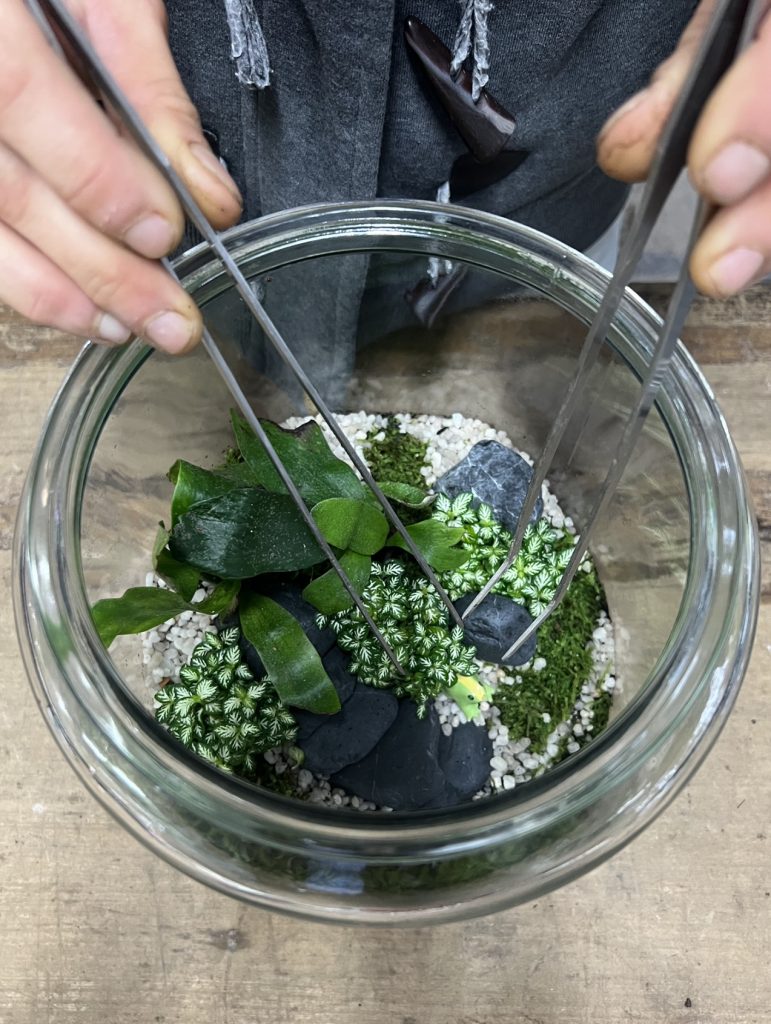Terrarium Care Sheets

CARING FOR YOUR TERRARIUM
Placement of your Terrarium
- Your Terrarium will thrive and be happy in a well-lit room away from direct sunlight.
- Occasional rotation of your Terrarium will also help with even plant growth.
Keeping your plants healthy
- Remove any weeds, sick plants carefully as well as wilting parts of the plant, such as old leaves or flowers to avoid decay and decomposition
- Trim leaves touching the sides of the Terrarium to avoid rotting and decay
- Do not fertilise your Terrarium
Watering
Your closed terrarium is like a mini ecosystem. When created properly they do not require much watering. When to water your Terrarium can be determined by the appearance of condensation on the inside of the glass. Condensation on the inside of the glass occurs due to the humid environment created by the substrate layers and allows the Terrarium to water itself.
Over watering will cause the plants to rot and die. If you are unsure if your closed terrarium has enough water observe the condensation levels on the inside walls.
- If there is light condensation on the inside of the glass your terrarium does not require watering
- If the walls are completely fogged and dripping you will need to leave the lid off for a day and let some fresh air in and to allow some water to evaporate as it is too wet
- If you can see water within the drainage gravel at the base there is way too much water and you need to leave the lid off
Be careful that the plants do not become too dry because they will wilt.
When you do add water, do so in small amounts at a time, since there is no place for the surplus water to drain. It’s best to water with a misting spray bottle. Spray the Terrarium only a few times and then replace the lid and observe the condensation levels on the glass for another day. It is easier to manage a Terrarium by adding a little bit of moisture than to over water.
Mould is a frequent phenomenon and a reality in terrariums due to warm moist conditions. Thankfully it’s more of a nuisance than a problem. Sadly mould is one of those things that’s hard to eliminate completely because it reproduces via microscopic spores. Mould can enter your terrarium via soil, plants and mosses, hardscape branches, rocks and the air.
Mould
Mould is a frequent phenomenon and a reality in terrariums due to warm moist conditions. Thankfully it’s more of a nuisance than a problem. Sadly mould is one of those things that’s hard to eliminate completely because it reproduces via microscopic spores. Mould can enter your terrarium via soil, plants and mosses, hardscape branches, rocks and the air.
Treatment of mould –
- Mould thrives on moisture. Opening your closed terrarium for brief periods to allow air flow will help to reduce the humidity levels.
- Hydrogen Peroxide 3% – Dip a Q Tip into 3% Hydrogen Peroxide and dab directly onto affected areas
- Hydrogen Peroxide 3% – we use a weakened solution of 7.5ml 3% Hydrogen Peroxide & 250ml water in a spray bottle and spray directly onto affected areas.
